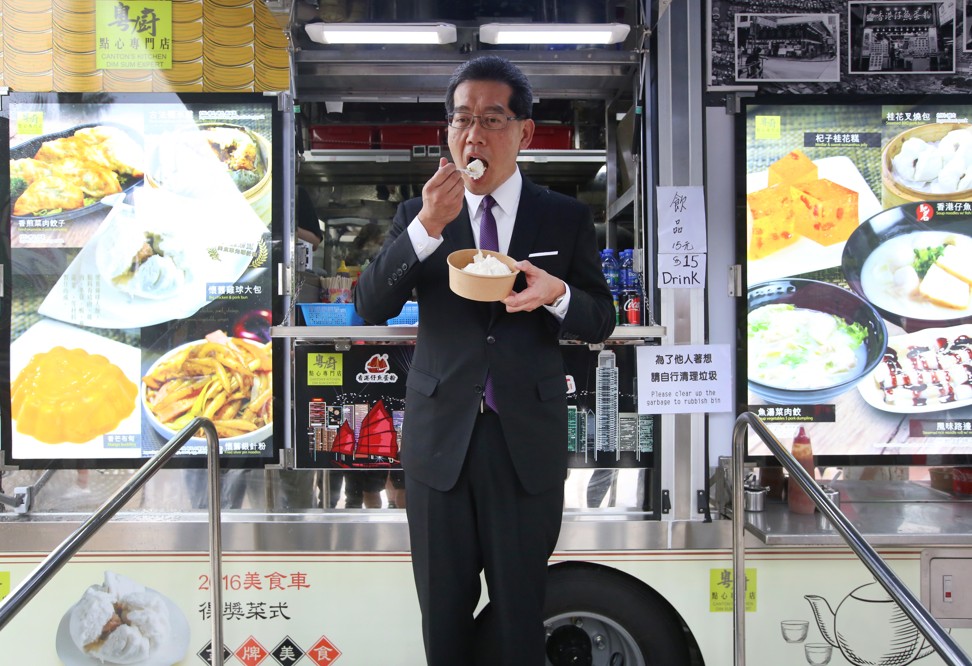
Why Hong Kong’s food truck scheme is failing to get into gear
Mike Rowse says inept planning and limited reach have hamstrung the pilot scheme from the outset and, with its founding fathers now bowing out, it may be left to civil servants to tackle any debacle

Overall the [food truck] scheme comes across more as a bureaucratic exercise rather than an attempt to create a new culinary experience
In deciding to revive the concept, albeit in a limited way, the government made some rather fundamental decisions. First, it resolved that though the food is being sold from trucks with wheels, the vehicles are not free to move around. In other words, customers must come to where the food is. In which case one may well ask what is the difference between a food truck a la Hong Kong and a fixed restaurant or kiosk.
Inevitably, the pilot scheme has run into headwinds. Only one of the eight locations is apparently profitable – the one next to Disneyland, where of course it is cannibalising the profits of the theme park operator from his own catering outlets.
Changes on menu for Hong Kong food trucks feeling business bite

But if we look at the wider picture, these teething problems seem less significant. What is at issue is the whole point of the scheme at all. Why, if food trucks are a good idea, are we only targeting tourists? There may be a case on traffic congestion grounds for limiting the overall number, but why is the government selecting the locations?
Why, if food trucks are a good idea, are we only targeting tourists?
Above all, why can’t the trucks move to where the demand for their products is, which may be different at different times of day? So a truck could be serving breakfast to students and office workers in the morning at MTR entrances and transport interchanges, then providing noodles or lunch boxes close to schools and offices at midday, moving on to more exotic fare in the evenings close to entertainment centres including, naturally, tourist areas.
Why don’t we do what we know works best in Hong Kong and let the market – individual entrepreneurs – decide what to do rather than try to plan everything centrally?
It may be too early (and unfair) to declare the scheme a failure. After all, we are only at the pilot stage. Nor is this column intended as a criticism of the civil servants concerned, especially those in the Tourism Commission. They are loyal and hardworking and will no doubt do their best to fine-tune the arrangements to make the best of the direction set for them by their political masters. But if it turns out the scheme cannot be rescued because it was misconceived at the outset, then my fear is it will be the civil servants who end up taking responsibility. The old fathers have retired, and the new ones will say the baby is nothing to do with them. Orphanage, here we come.
Mike Rowse is the CEO of Treloar Enterprises. [email protected]

